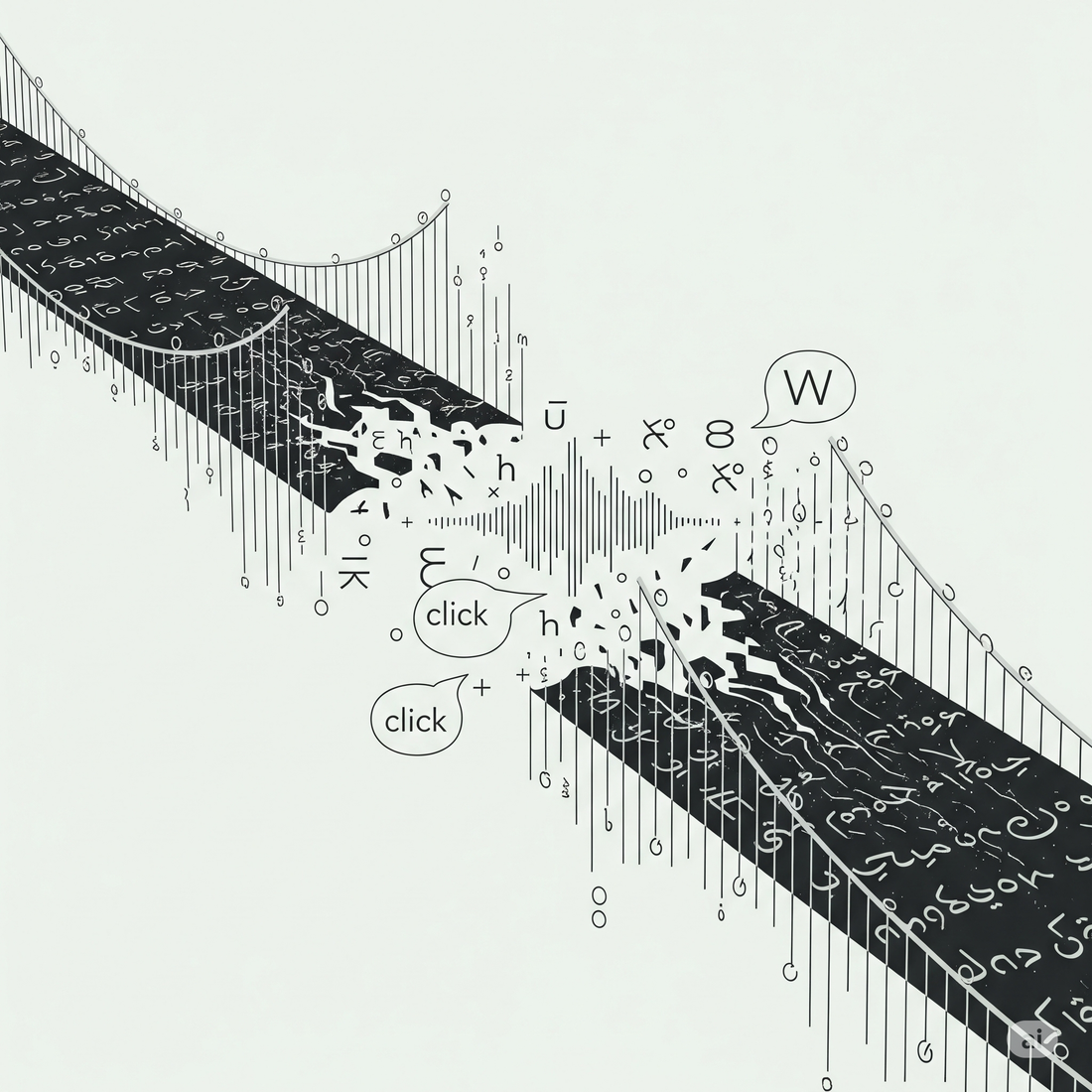
AI's Unspoken Linguistic Compromise: Where the Future Just Won't Click
AI is widely celebrated as a solution for societal challenges, from healthcare to education, with narratives often highlighting its inherent inclusivity. We're frequently told AI tools, particularly in translation and text-to-speech (TTS), dismantle barriers and foster unprecedented access. Yet, beneath this seemingly benevolent surface lies a subtle, often unacknowledged paradox: AI’s quest for 'accessibility' can inadvertently compel linguistic compromise, potentially perpetuating, rather than dissolving, existing digital divides.

At Haibo Phanda, our mission is to equip young South Africans and Small, Medium, and Micro-Enterprises (SMMEs) with essential AI digital literacy. Seeking truly accessible and culturally resonant content, we leveraged avatars delivering information in South African indigenous languages. Our initial aspiration embraced isiXhosa's rich phonetic tapestry, renowned for its distinctive click consonants. However, cutting-edge AI text-to-speech tools revealed a stark reality: our avatars were, in essence, forced to adopt isiZulu. This wasn't a preference, but a direct consequence of profound limitations in current AI capabilities for genuinely diverse linguistic synthesis. Observe one of our avatars in action using Zulu vernac here.
The "Forced" Choice: A Microcosm of a Macro Problem
Why isiZulu, not isiXhosa? The answer lies in linguistic complexity and algorithmic readiness. IsiXhosa, though a Nguni language like isiZulu, features a more extensive and phonetically intricate system of click consonants. These unique sounds, central to the language's meaning, pose formidable challenges for conventional AI TTS models.
Such models, largely trained on high-resource languages with simpler phonetics, struggle to accurately synthesise these sounds, often producing unnatural or unintelligible output.
A critical bottleneck is the severe lack of high-quality, extensive, and ethically curated speech datasets for isiXhosa or other SA-vernac options, especially compared to global languages. Without sufficient data capturing its phonetic range and regional variations, AI models cannot produce natural isiXhosa speech. IsiZulu, while still challenging for AI, presents fewer extreme phonetic complexities, allowing existing models to achieve a more acceptable synthesis. Our "choice" when scripting our avatars, was thus a forced adaptation, an implicit acknowledgement that AI's promise of linguistic diversity remains, for many languages, a distant horizon.
Unpacking the "Inclusive Paradox": A Critical Lens
This experience is more than a technical anecdote; it's a vivid illustration of the "inclusive paradox" in AI. This paradox arises when technologies, ostensibly designed for inclusion, inadvertently reinforce existing inequalities or create new forms of exclusion due to inherent biases.
Technological Bias and Linguistic Hegemony: This paradox stems from AI research and development's disproportionate investment in economically dominant languages. This global linguistic bias means foundational AI models are "fluent" in English or Mandarin, but rudimentary in thousands of other languages, including Africa's over 2,000 distinct tongues. Framing "accessibility" solely by pre-existing AI capabilities risks entrenching a linguistic hierarchy where only certain languages are 'AI-ready', marginalising others.
Surface-Level vs. Deep Inclusion: Basic text-to-speech in some indigenous languages isn't synonymous with deep, culturally resonant linguistic inclusion. It can become "tick-box" accessibility, where language options mask a lack of genuine phonetic accuracy or idiomatic expression. True inclusion demands AI respects a community's full linguistic identity, not a simplified, technologically palatable version. When AI fails to render a language authentically, it subtly communicates lesser value, undermining empowerment.
Reshaping the Digital Divide: Far from uniformly bridging the digital divide, these limitations reshape it. The divide now includes linguistic access to digital content. For a South African isiXhosa speaker relying on auditory content, AI's inability to accurately render their language means continued exclusion from digital platforms. This creates a new stratum of marginalisation for speakers of genuinely under-resourced languages.
Towards a Nuanced Digital Literacy and AI Equity
This critical juncture demands a more nuanced understanding of digital literacy and AI equity from both the public and, crucially, educators.
For the General Public: Digital literacy in the AI age extends beyond application use. It mandates critical awareness of AI's biases, limitations, and its socio-technical development. Users must question AI's inclusivity claims, recognise when "accessibility" is a compromise, and demand authentic linguistic representation. For instance, understanding why AI struggles with an isiXhosa click is as vital to digital literacy as understanding how to ask a question in isiZulu.
For Educators: The imperative is to cultivate this critical AI literacy from an early age. Curricula must move beyond tool proficiency to include AI ethics, bias, and the geopolitics of language in AI development. Educators can highlight linguistic diversity and challenge technological hegemonies. They can foster environments where students critically interrogate AI's capabilities, particularly concerning indigenous languages. Furthermore, institutions and researchers must be incentivised to create high-quality, open-source datasets for under-resourced languages, directly addressing data scarcity.
Finally, a Cally for Authentic AI Inclusion
Haibo Phanda's "forced" adoption of isiZulu TTS over isiXhosa is a stark reminder that truly inclusive AI is not yet realised. It exposes the "inclusive paradox": AI's promise to bridge divides can, without mindful development, solidify linguistic inequalities.
Achieving genuine digital literacy and AI equity necessitates moving beyond surface-level accessibility. It calls for critical engagement with AI's capabilities, a profound understanding of its biases, and a concerted global effort to invest in the linguistic diversity that truly reflects our world. Only when AI can authentically speak all our languages, with their phonetic richness and cultural nuance, can it truly fulfil its promise as a democratising force. Until then, we must remain vigilant, questioning the silent compromises exacted by technology in its march towards a purportedly inclusive future.
What, then, does true digital inclusivity truly entail in an AI-driven world? Is it merely the broadest possible reach, or is it a deeper, more challenging commitment to the authentic resonance of every voice, regardless of its statistical prominence in global datasets? The answer to this question, perhaps, defines the true north of our collective technological ambition.
